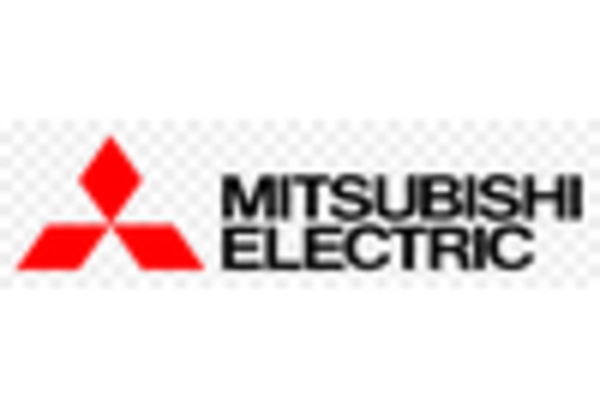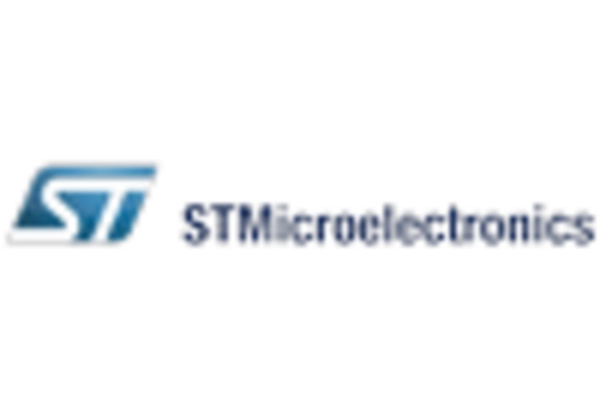The sic power-semiconductor market is characterized by a dynamic competitive landscape, driven by increasing demand for energy-efficient solutions across various sectors, including automotive, industrial, and consumer electronics. Key players such as Infineon Technologies AG (Germany), ON Semiconductor Corporation (US), and Cree, Inc. (US) are strategically positioned to leverage innovation and technological advancements. Infineon Technologies AG (Germany) focuses on expanding its product portfolio through continuous R&D investments, while ON Semiconductor Corporation (US) emphasizes strategic acquisitions to enhance its capabilities in power management solutions. Cree, Inc. (US) is concentrating on developing cutting-edge silicon carbide (SiC) technologies to meet the growing demand for high-performance power devices. Collectively, these strategies contribute to a competitive environment that is increasingly centered around technological differentiation and market responsiveness.
In terms of business tactics, companies are localizing manufacturing and optimizing supply chains to enhance operational efficiency and reduce lead times. The market structure appears moderately fragmented, with several players vying for market share. However, the collective influence of major companies is significant, as they drive innovation and set industry standards. This competitive structure fosters an environment where collaboration and strategic partnerships are essential for sustained growth and market penetration.
In October 2025, Infineon Technologies AG (Germany) announced the opening of a new manufacturing facility in the US, aimed at increasing its production capacity for SiC power semiconductors. This strategic move is likely to enhance the company's ability to meet the rising demand for electric vehicle (EV) components, positioning it favorably in a rapidly evolving market. The establishment of this facility underscores Infineon's commitment to localizing production and reducing supply chain vulnerabilities.
In September 2025, ON Semiconductor Corporation (US) completed the acquisition of a leading SiC technology firm, which is expected to bolster its product offerings in the power semiconductor segment. This acquisition not only expands ON Semiconductor's technological capabilities but also enhances its competitive positioning in the growing EV market. The integration of advanced SiC technologies is anticipated to accelerate the development of energy-efficient solutions, aligning with market trends towards sustainability.
In August 2025, Cree, Inc. (US) launched a new line of SiC power devices designed for high-voltage applications, targeting the renewable energy sector. This product introduction reflects Cree's strategic focus on innovation and its commitment to providing solutions that support the transition to sustainable energy sources. The launch is expected to strengthen Cree's market presence and cater to the increasing demand for efficient power management solutions in renewable energy systems.
As of November 2025, current competitive trends in the sic power-semiconductor market are heavily influenced by digitalization, sustainability, and the integration of artificial intelligence (AI) in manufacturing processes. Strategic alliances among key players are shaping the landscape, fostering innovation and enhancing product offerings. Looking ahead, competitive differentiation is likely to evolve from traditional price-based competition to a focus on technological innovation, reliability in supply chains, and the ability to deliver sustainable solutions. This shift indicates a growing emphasis on value creation through advanced technologies and strategic partnerships.














Leave a Comment